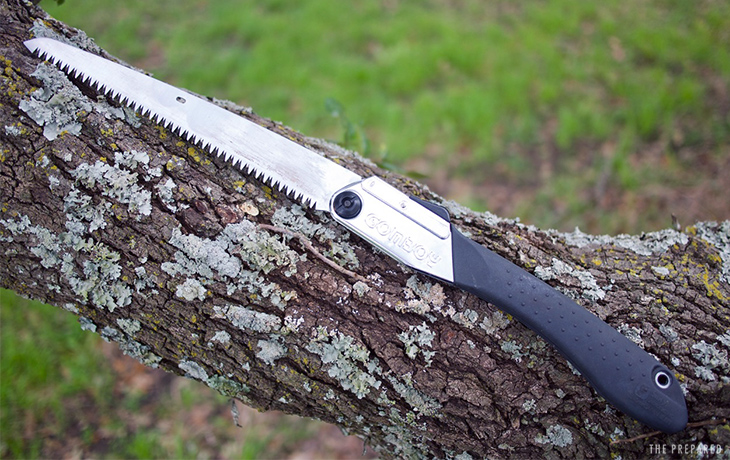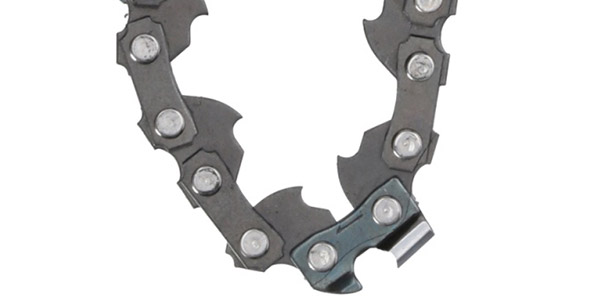A well-reviewed hand saw is one of the four edged tools that survival experts believe everyone should have in their kits. Although a saw was overlooked by many preppers in the last decade, a growing number of people are changing their minds and including a folding saw at least in their home supplies, if not their go-bags — thanks in part to the encouragement by celebrity bushcrafters.
Perhaps the main reason why some preppers overlook the hand saw is they plan on using their field knife, bushcraft axe, or survival hatchet to complete the types of tasks you might otherwise do with a backpacking saw.
Even in situations where using a saw is comparable to those wedged tools — like making traps or clearing a camp — using the saw is often faster and safer. These twin advantages of speed and safety are huge in an emergency scenario, where you may be pressed for time, unable to swing a larger tool due to space or physical limitations, or suffering from the effects of sleep loss, stress, fatigue, or injury.
Plus there are many tasks where a saw is just plain better, like in basic woodcraft, where you care about having clean cuts instead of the brute-forced splinters from an axe. Or sawing your way through materials (like metal) where a swinging wedge just won’t cut it.
The saws that come with the best multitools for survival (including Swiss Army Knives) are quite good, and can do a lot of the work that you need a saw for. When thinking through your core four edged tools and how to mix and match them, some experienced bushcrafters will only rely on their multitool saw. That’s fine if you’re experienced, but these saws are limited by their small size, so we still recommend at least a portable folding saw for most people.
Saws are a frequent add-on feature to other prepper products, especially the more novelty products found on Amazon. It’s common, for example, to find a hybrid tool that sort of looks like a hatchet with a bunch of other stuff thrown in, including a saw in the handle. The (rare) quality ones are fine as a backup, but we still recommend a dedicated saw. Think of those all-in-one tools as a backup to your main kit, like something you throw in the trunk of your car.
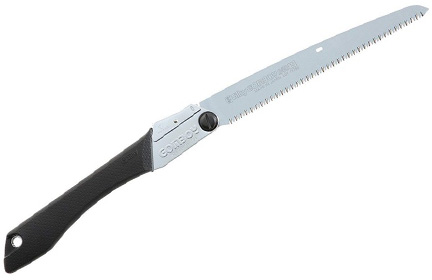
Best for most people:
Silky GOMBOY 240mm Saw
The best survival saw for most people is the popular $42 Silky GOMBOY 240mm saw with medium teeth. There isn’t much controversy with this pick — when this topic comes up among preppers, the Silky GOMBOY is the most-commonly recommended survival saw.
Some of the best products for emergencies are found well outside the “survival” niche. When professionals — gardeners and landscapers in the GOMBOY’s case — use a product every day and still love it, you can feel confident it’ll deliver in an emergency.
The GOMBOY’s locking saw blade is made of high-grade, very strong Japanese steel. This hardness means the aggressive saw edge lasts forever, but the tradeoff is that you have to take extra care to keep the blade from binding up during use so that you don’t break it.
The 9.5-inch, 9.6-ounce GOMBOY model we recommend is relatively large, but we think the extra length is worth it because it allows you to tackle larger cutting projects (and the smaller blades you have in your kit can handle the smaller chores). If you want to go smaller and slightly more packable, however, get the $47 Silky GOMBOY 210mm version.
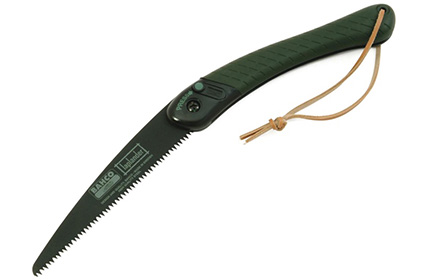
More compact:
Bahco Laplander Folding Saw
If you’re looking for a smaller package than the Silky 240mm, experts also like the 8-inch long, 7-ounce $30 Bahco Laplander, a longtime staple of the bushcraft and camping communities.
The Laplander is more of a dedicated camping tool than the GOMBOY, which means they assume you’ll be carrying it on foot over longer distances and designed it to be lighter weight and more compact. Its replaceable saw blade is tougher and far less likely to break than the GOMBOY’s under misuse, but it’s also less effective and will dull faster.
Fixed bow saws
We recommend folding saws for preppers because they’re compact and have fewer parts to lose or break. Bow saws are a very popular alternative, but they come with too many tradeoffs for our liking.
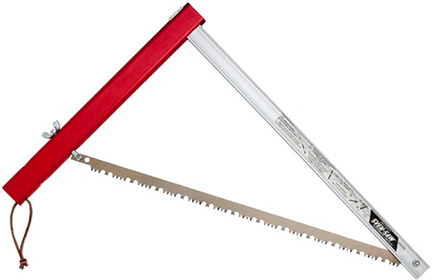
Best bow saw:
Sven Saw 15"
If you do choose a bow saw, the $57 Sven Saw is the standard bushcraft saw recommendation. This Swedish-made saw is well-reviewed and has been featured on a number of survival shows. It’s relative lightweight, durable, and compact, and it won’t let you down.
Bow saw blades are thinner than folding saw blades, so they slide more quickly through the wood without binding up. This makes them easier to work with and they require far less attention to avoid accidentally breaking them under vigorous field use.
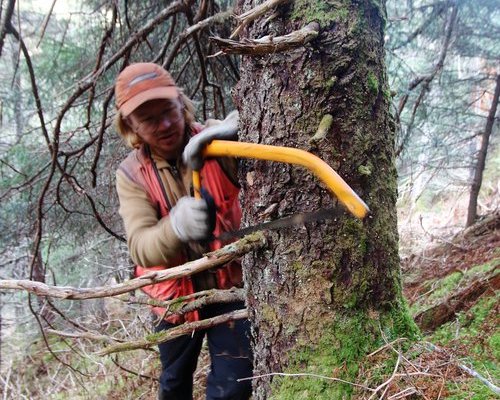
The downside to a bow saw is that you’re more limited in the diameter of what you can cut through. The handle (orange in the above picture) will stop the blade from cutting too deeply once it rubs up against the tree, limiting the cut depth to the distance between the blade and handle. If you wanted to cut that tree down you’d have to cut from three or four different sides to meet in the middle.
Pocket survival saws and wire saws
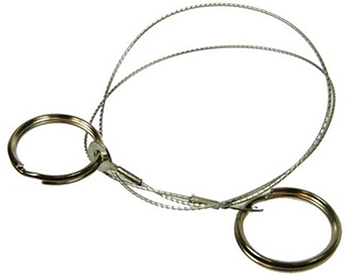
The wire saw was a staple of 80’s era hollow-handled knife kits, and every child of the 80’s knows that these don’t really work. To be clear: It’s not just the cheap wire saw you got with your Rambo knife that doesn’t work — none of them work. So avoid these worthless fake preps.
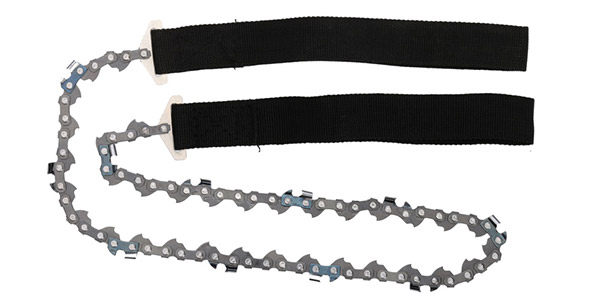
The pocket chainsaw is an upgrade to the wire saw and commonly bought by new preppers searching around Amazon. It’s easy to understand why: they’re small and light, usually come in a tiny pouch you can throw in your bags, and you can picture using your hands to saw back and forth.
Most of them are junk. There are a few models that some reviewers claim are usable, promising you a lot of cutting edge in a compact space. But even the very best pocket chainsaws are slow, awkward, and will bind up easily.
A folding saw or bow saw — or even just the saw that’s on your multi-tool — is always better than a pocket chainsaw.
Apart from the fact that they’re just not very effective, these saws have another major drawback as preps: they’re essentially chainsaw chains, with complex and tiny moving parts. That makes them breakable and unreliable.
